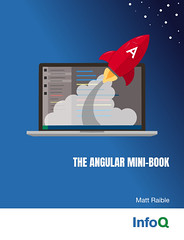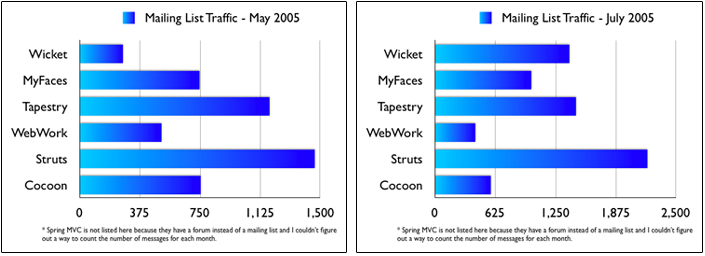Should I change AppFuse's default web framework?
Currently, the default web framework in AppFuse is Struts. It's nothing fancy like Shale or Struts Ti, but rather Struts Classic. Even though Struts is not dead it's a pain in the ass to work with compared to other MVC frameworks like Spring MVC and WebWork. Yesterday, on the AppFuse Mailing List, I kicked off an informal poll about switching to a different default web framework. I think most of the people that choose Struts w/ AppFuse are choosing it b/c it's the default. Making another framework the default would likely same quite a few users a lot of headaches.
So which one should I make the default? Here's my thoughts from the mailing list thread:
I like Spring MVC and WebWork better than Struts, but I believe that
WebWork is much easier to understand and develop with. Unfortunately,
it's not well documented or marketed, so it's a bit difficult when you
run into snags. Of course, if you contact the user community via
forums or e-mail, answers flow quickly.
...
I'd like to use the framework that's simplest to
understand. Right now, in my eyes, that's WebWork. I think JSF and
Tapestry are excellent too (as component-based frameworks), but
Tapestry's learning curve is difficult and JSF has a lot of issues
(like everything is a post). Hopefully things will get better with
JSF 1.2, but it's probably another 6 months before MyFaces supports
1.2 - let alone the app servers.
...
Maybe we should just drop Struts altogether - or replace it with
Struts Ti? Unfortunately, it'll probably be a while before it's ready
for production (I doubt it's that useable now).
Of course, if a WebWork Book was out - this move would be a lot easier. I did talk to Patrick Lightbody on IM yesterday and he said "it's done" and supposedly he has copies, but I haven't seen anything on the WebWork Blog to prove this.
A related question: how much would it hurt AppFuse if I dropped Struts altogether and went with something like Wicket instead? I'd like to keep that cap at 5 web frameworks. If I dropped Struts and added Wicket, I might lose potential users, which might not be a bad thing. 



